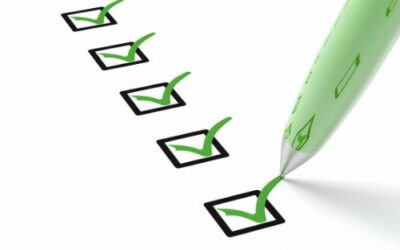
Picture running a small or medium company; you do everything yourself—including asset tracking. Many owners, like you could have in the early days, rely on Excel. Excel looked fantastic—quick to build lists, inventory control, and organisation of data. Excel begins to expose its limits, though, as your company expands.
It was not built for sophisticated asset tracking. Manually updating data gets difficult, and mistakes like deleting a row or entering the incorrect number could compromise your records. There is no real-time data. Hence, retaining maintenance schedules is quite a task.
Imagine now using asset management software instead. It tracks everything automatically, changes in real time, and expands with your company. No more hours wasted adjusting spreadsheets or obsessing over human mistakes. Excel was useful in the past, but today’s companies demand more—software that secures and streamlines your assets so you can keep on top of everything effortlessly. Itemit can provide you with such asset register templates, helping you run your everyday tasks with ease.
The purpose of an asset register is to be a highly detailed list of all of a business’s assets. The list includes details such as the owner of the assets, the condition and location. An asset register helps businesses understand the asset’s price, depreciation, status, and procurement date. In addition to this, the asset register also lets the user know the asset’s current value and insurance status.

What Types of an Asset Register Exist?
Businesses cannot effectively track and control their resources without asset registers. These registers guarantee correct monitoring and maintenance by giving a methodical approach to document details on the assets a corporation holds. Depending on the kind of assets being recorded, different asset registers—each with a particular use—exist. Knowing these different kinds can help companies decide which one best fits their situation.
Fixed Asset Register
A fixed asset register is designed to record long-term physical assets like buildings, machinery, cars, and furnishings. Usually designed to be employed over an extended period, these assets are not readily convertible into cash.
Crucially important information in this kind of registration includes:
- Purchase date
- Purchase price
- Depreciations
- Place of the asset’s location
- Plans for maintenance
Maintaining a fixed asset register helps companies control depreciation and guarantee the scheduled completion of all required repairs and maintenance. A firm might use it, for instance, to monitor fleet vehicles or office equipment to guarantee that these precious assets remain in excellent condition and that their value is fairly reported in its financial accounts.
IT Asset Register
Many businesses operate their operations in the digital age of today mostly depending on technology. Specifically meant to track hardware and software assets like computers, servers, software licenses, and other tech-related resources is an IT asset register.
Usually, the “IT asset register” consists of:
- Serial numbers and guarantees
- Version control and licenses for software
- Configurations of networks
- End-of-life dates for tools and programs.
- Updates and security standards
A company with a lot of laptops and PCs, for instance, would use this register to record which staff members use which devices, the state of software upgrades, and any possible security concerns related with obsolete software.
Financial Asset Register
Tracking assets regarded as financial in nature—that is, investments, stocks, bonds, and other financial instruments—a financial asset register. This kind of register is geared at assets that are readily liquidated or turned into cash. Companies that handle significant portfolios of financial assets or participate in investing activities must pay great attention.
Important components of this kind of registry consist in:
- Purchase price
- Market value
- Ownership data
- Maturity dates for bonds or other investments
A corporation having investments in several stocks and bonds, for instance, would utilise a “financial asset register” to monitor these assets and effectively manage their portfolio thereby guaranteeing regulatory compliance and maximising earnings.
Consumable Asset Register
Consumable assets are those used up during routine business operations—that is, office supplies, raw materials, and other expendables. Monitoring the stock levels of these products enables companies to avoid shortages and guarantee seamless operations by use of a consumable asset register.
Usually speaking, the consumable asset register comprises:
- Level of inventory
- Information on suppliers
- Replenishment plans
- Cost per unit
A restaurant might track its food inventory using a consumable asset register, for instance, making sure that ingredients are reordered before they run out and to avoid overstock and waste.
What About the Asset List Format?
The particular format or structure applied in an asset register is referred to as the asset list format. The type of assets under management and the sector the business runs in will determine this as well. For example, a construction company could concentrate more on maintenance plans and depreciation values for machines whereas an IT company might employ a thorough list approach stressing serial numbers, software versions, and network configurations.
Businesses choosing an asset list format should weigh what data tracking is most important. Important elements could include:
- Asset IDs
- Date of purchase and installation
- Current status or condition
- Responsible department or individual
A well-organised asset list format guarantees nothing slips through the gaps and streamlines asset management. It also facilitates managers’ wise judgements about asset use and replacement as well as auditor evaluation of asset records.
Understanding What is the Purpose of an Asset Register
Having viewed the several types of asset registers now, you can ask the most important question – so, what is the purpose of an asset register? Simply said, asset registers enable companies to retain a correct record of their assets, therefore guaranteeing proper management, maintenance, and financial reporting. They help to lower asset loss risk, enhance maintenance plans, and offer vital data for audits and decision-making. Businesses would find it difficult to track their priceless resources without them, which would cause inefficiency and maybe financial loss.
Every one of these—a fixed asset register for long-term assets, an IT asset register for technology resources, or a consumable register for daily needs—helps companies remain orderly and effective.
The Benefits of an Asset Register

There are many benefits of having an asset register, including:
- Assets can be tracked and easily identified
- Assets can stay compliant in accordance with the industry’s regulatory standards
- Helping to prevent assets from getting lost or being stolen thanks to itemit’s accurate location data services
- Estimating repair and maintenance costs
- It helps to provide complete transparency of all assets and associated data
- Providing users with a highly accurate audit trail
- The calculation of depreciation
As your business grows, you’ll naturally gain more assets. It can become increasingly difficult to track all of your assets over time. Keeping a close eye on your assets is much easier when you have an asset register. While setting up the register can take time, once it is complete, it will benefit your business right away.
Another benefit of this type of register is that it can help to eliminate ghost assets. When an asset is damaged beyond repair or has gone missing, they are no longer of any use. By tracking every asset and its state of repair, ghost assets can be eliminated. Finally, the register can be accessed via a computer or mobile app.
What Should I Include in My Asset Register?
You can include any business assets you wish in your register. Assets can include:
- Computers, printers, servers, and laptops
- Vans and cars
- Furniture such as chairs, desks, and filing cabinets
- Photocopiers, telephones, and scanners
- Stationery and tools
- Machinery and associated equipment
Add any assets that have value to your business. The above list is just an example, however, your business may have other types of assets. Adding these assets to the register can help you to track them. Using itemit allows you to track both high and low-value assets 24 hours a day.
What Data Should I Include in My Asset Register?
There is a real possibility for you to include a whole host of different data in your register. Including as much detail about each asset can be very useful. Some of the data that itemits users include is the:
- Asset’s Depreciation
- Asset’s remaining life
- Asset’s serial number or barcode
- Current and previous users of the asset
- Current value of the asset
- Date and frequency of maintenance
- Estimated resale value
- Insurance coverage and what it includes (repairs, maintenance, etc)
- Licence start date
- Location of all assets
- Manufacturer’s warranty information
- Operating licence
- Owner of the asset
- Purchase date and price
When every asset in the register contains detailed information, they are easier to keep track of. Users will know where the assets are and what condition they are in. Notes can be left for the next user, and management can see how effectively each asset is being used.
Calculating Depreciation: A Detailed Guide

Alright, picture yourself recently purchasing some machinery or a delivery van for your company. Do you realise it will lose value with time? This is where calculating depreciation finds use. Depreciation is essentially the act of distributing an asset’s cost over its useful life such that, every year, you may record the value lost. This is quite crucial since it helps you to see more clearly the actual worth of your assets right now.
Let’s break it down.
Straight-Line Depreciation
The easiest method to understand is straight-line depreciation. It’s called “straight-line” because the asset loses the same amount of value every year.
Here’s a simple formula:
Depreciation = (Cost of Asset – Salvage Value) / Useful Life
Let’s say you buy a van for $30,000. You think it’ll last 5 years and will be worth $5,000 at the end of that time (this is your salvage value). Using the formula:
Depreciation = ($30,000 – $5,000) / 5 = $5,000 per year
So, each year, you say that the van has lost $5,000 in value. After five years, the van’s value on paper will be down to the $5,000 salvage value.
Declining Balance Depreciation
Now, not all assets lose value at the same rate every year. That’s where the declining balance method comes in. Instead of losing the same amount each year, the asset loses more value early on, and the depreciation amount gets smaller over time. It’s useful for things like computers or tech equipment that lose a lot of value upfront.
Say you’re using the same van, but this time, you’re using a 20% depreciation rate. In year one, you calculate 20% of the $30,000 cost:
Depreciation = $30,000 x 20% = $6,000
At the end of year one, the van’s value is now $24,000 ($30,000 – $6,000). In year two, you do the same thing but based on the new value:
Depreciation = $24,000 x 20% = $4,800
See how the number gets smaller each year? This method reflects the fact that some things lose their value faster in the early years.
Units of Production Method
Well, there’s another method that works really well for stuff that gets used a lot, like machinery or vehicles. It’s called the Units of Production Method, and it’s different from the straight-line approach we talked about earlier because it doesn’t just focus on time—it focuses on how much you actually use the asset.
Here’s how it works: Instead of saying, “This machine will last five years,” you look at how many units the machine will produce over its entire life. You then base the depreciation on how much it produces each year.
Let’s say you buy a machine for $50,000, and you think it’s going to crank out 100,000 units over its life. You also figure that when it’s done, you can still sell it for $5,000 (that’s your salvage value). Now, let’s say that in the first year, the machine produces 20,000 units.
To figure out the depreciation for that year, you’d use this formula:
Depreciation = (Cost of the Asset – Salvage Value) / Total Expected Output x Actual Output
So, with our numbers:
Depreciation = ($50,000 – $5,000) / 100,000 units x 20,000 units = $9,000
This means that for the first year, your machine depreciates by $9,000 based on the 20,000 units it produces.
Assets Life: How Long Will It Last?
When we discuss asset life, we basically mean the length of time you hope an asset will be valuable until it becomes either obsolete or worn out. For instance, you might anticipate running a delivery van for five years. Maybe three years for PCs since technology develops quickly. When you figure depreciation, the asset’s life is essential since it dictates the annual value loss of the asset.
Again using our van example: the assets life is five years if the van costs $30,000 and you intend it to last five years. We then distribute the decline over that five-year period. That means dividing the cost of the vehicle less its salvage value by five for “straight-line depreciation”.
Should the assets life be shorter, the annual depreciation value will be more since you are distributing the expense over a smaller period. On the other hand, as you are hoping the asset would last longer, a longer assets life indicates reduced annual depreciation.
Why It's Important
Since it influences the financial planning of your company, precisely figuring out the asset’s life is absolutely vital. Should you exaggerate the lifetime of an asset, you may find yourself with an inflated value in your records, which may cause issues later on during an asset audit or tax filing. Underestimating the assets’ life could mean you are not maximising the tax advantages of depreciation.
Therefore, always make sure your estimate of the assets life is reasonable depending on the method you are utilising the asset while calculating depreciation. For instance, compared to office furniture, daily utilised heavy gear probably has a shorter lifespan.
Knowing the asset’s life helps you to maintain a current asset register and make wiser financial decisions on replacements, repairs, and future investments.
Keeping Track of Your Asset Registry
Let us now discuss where you record all this. You need an effective “asset registry,” essentially a ledger where you record the worth of anything you own. Whether you’re completing your taxes or if you have to do an asset audit, the key here is that your assets lose value over time, and you should monitor their worth. itemit’s asset register software is the thing you can rely on to do these tasks easily and properly.
Why It Matters
Calculating depreciation is crucial since it influences your company’s financial situation. Knowing the true value of your assets will help you make wiser business decisions, save taxes, and arrange better replacements. For instance, you know you’ll have to budget for a new van shortly when it approaches the end of its life.
Does that logical? Calculating depreciation and tracking it in your asset register helps you to always have an honest, reasonable view of the worth of your items. Though it sounds like a lot of arithmetic, if you get the hang of it, it’s just another tool to enable seamless operation of your business.
Maintaining an Asset Register

So, when you’re running your business, and you’ve got all kinds of equipment, tools, and even vehicles. You’ve got to keep track of everything, right? But here’s the tricky part: keeping that list accurate can be a real headache. Let me explain why.
Things Get Moved Around
First of all, assets are not always kept in one spot. Assume for a moment that you have machines in several warehouses or computers in several offices. People constantly shift objects about without always changing the register. Suddenly, though, the laptop meant for one workplace is actually in another; nobody knows since it wasn’t registered.
If you lack a decent mechanism for tracking these movements, your asset register can rapidly lose synchronisation with reality. Then, when you try to do an inventory check, you find yourself wondering where everything went.
Missing or Lost Items
Ever find yourself lost in something little yet costly, like a tablet or a business phone? More commonly than you would believe. Even more significant items can disappear, particularly if they are hardly utilised. It might be rented to another department and never returned or hidden in a warehouse corner. You can be “missing” assets without even knowing it if your asset register is not routinely updated.
And let’s be honest—nobody enjoys tracking down items that ought to be where they should be, but they aren’t.
Depreciation and Value Changes
Another challenge is your assets losing value with time. We discussed earlier computation of depreciation, but it is an ongoing process. Your statistics will be off if you do not routinely change your asset register to show that. Your machine may be described as worth $20,000, but in truth, it has dropped to $10,000. That would affect your business decisions in addition to your accounting.
Keeping track of how much anything is truly worth is therefore more difficult than it sounds, particularly in cases of many objects to oversee.
Human Error
People make errors, really. Human mistake is a major contributor to maintaining an asset register accurately, whether it is neglecting to record a new purchase on the register, misplacing an item, or entering incorrect information. One small error can throw everything off; if you miss it early on, it can spiral. Then, you have a lot of discrepancies to explain when an audit is scheduled.
Lack of Regular Updates
Another often-occurring problem is people being busy and forgetting to update the register regularly. You sell some old goods or buy fresh equipment, but the asset register does not change right away. If you’re not on top of things over time, your asset list will become out of date, and your own picture will be distorted.
It’s like trying to remember everything in your house without ever writing it down—eventually, you will forget what you have or where it is.
Solution: Automation Helps
This is why so many businesses have switched to using asset management software. Instead of trying to keep everything in your head or on a spreadsheet, the software does the hard work. By using itemit’s QR codes, it is possible to maintain your assets while tracking them. With a list of assets that can be accessed as and when it is required, a physical audit can be undertaken.
By scanning each item, users can confirm that the asset has been located and accounted for. In addition to this, the detailed information that is listed can be compared to a physical inspection. A physical inspection allows appropriate action to be taken should any discrepancies arise.
Asset Registers and Ease of Use
Every asset register can be accessed and used with ease. itemit has designed the user interface in a way that inputting and editing information is very simple. Additionally, menus are easy to access, allowing users to make updates whenever they wish. As long as assets are logged in and out as required, they are visible and can be traced without any problem. The location information will be displayed in the appropriate menu.
itemit’s Asset Registers
itemit has made it possible for businesses of all sizes to keep a register of their assets. As we discussed earlier, when a business starts to expand, it can struggle to keep track of its assets. And it’s no wonder. However, having a complete register of every asset can make a huge difference for you. Asset control will be easier because all the information you have is structured, detailed and properly maintained. So no mistakes can be made. All your decisions will be based on accurate data.
Please contact us if you have any questions about registering your assets. You can reach us at team@itemit.com. Alternatively, if you are ready to test the value of our asset management software, you can sign up for a no-obligation 14-day trial.

Try itemit
Choose a better way to track
your assets.
Start your free 14-day trial now!

Keep Learning
itemit Blog
Tips, guides, industry best practices, and news.
Why Having An Accurate Asset Register Is Important
Why is having an accurate asset register so important and how can it help with equipment tracking? Read this post now to find out!
What To Include In Your Fixed Asset Register
What should you include in your fixed asset register and how can you make it work for you? Read this post now to find out!
What Exactly Is An Asset register?
What exactly is an asset register and will your chosen asset register format offer you everything you need? Read this post to find out!



